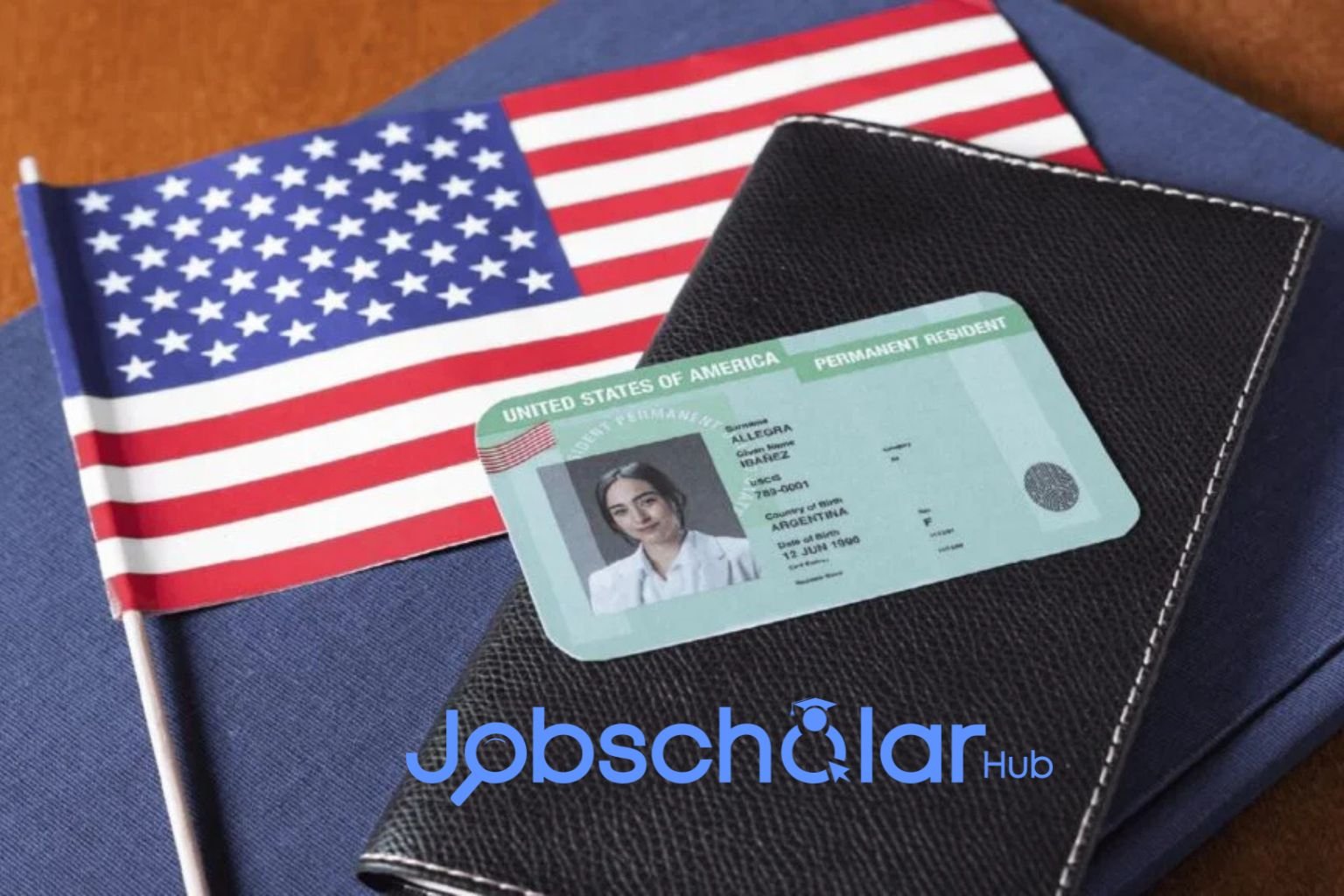Think about working in America—and perhaps even making it your new home forever. The way to make all that possible is by using employment-based green cards. An employment-based green card is what can finally grant you an immigration visa—possibly as an aspiring skilled worker, a would-be entrepreneur, or maybe even some executive hotshot hired by a Fortune 500—to move to the United States for good.
But let’s be real: the U.S. immigration system is complex. Navigating the different types of green cards, the eligibility, and how to apply for each is confusing.
In this comprehensive guide, we’ll take you through everything you need to know about employment-based green cards, its various categories, the essential requirements, plus how to apply.
Table of contents
- What is an Employment Based Green Card?
- Benefits of Employment-Based Green Card
- What are the Green Card Options Through Employment Categories
- Eligibility Requirements for an Employment-Based Green Card
- How Do You Apply For Employment-Based Green Cards?
- What are the Challenges in Employment Based Green Card?
- Tips for the Employment Green Card
- Conclusion
- Frequently Asked Questions
- References
- Recommendation
What is an Employment Based Green Card?

An employment-based green card refers to a U.S. visa that provides permanent residency status to an overseas worker with a permanent job in the United States. This type of green card differs from others based on family ties or refugee status, focusing instead on an individual’s abilities, skills, and qualifications for jobs that are in high demand in the country.
The process allows foreign workers to come to the U.S. to live and work permanently. These workers contribute to fields such as technology, healthcare, engineering, research, and more. An employment-based green card grants you the legal right to live and work in the U.S.
RELATED POST: Netherlands Work Visa Requirements 2025
Benefits of Employment-Based Green Card
- Permanent Residency: You can live and work in the U.S. without the need to renew your visa.
- Path to Citizenship: After five years as a permanent resident with a green card, you become eligible to apply for U.S. citizenship.
- Employer Control: You are bound to the employer who sponsors your green card. You can seek jobs or even launch a company without the limitations associated with temporary work visas such as the H-1B.
- Family Petition: A lot of green card holders can apply to have immediate family members (spouses and children) become permanent residents here too.
This is an appealing route to those professionals who have managed to get an offer from a U.S.-based employer who is willing to file their green card application.
RELATED POST: 5 Australian Companies That Sponsor Work Visas
What are the Green Card Options Through Employment Categories

There are five categories of employment-based green cards, which are for different types of workers. Knowing which category you fall under lays the foundation for determining your eligibility and the application process. Here’s how the EB categories work:
EB-1: Priority Workers
EB-1 is for people who have extraordinary talents in their fields. This is divided into 3-
EB-1A- Individuals of extraordinary ability in the sciences, arts, education, business, or athletics. The applicant must demonstrate achievements that are recognized nationally or internationally (for example, a prestigious national or international award, such as a Nobel prize, Olympic medals, etc.) or substantial accomplishments
EB-1B- For outstanding professors and researchers who are internationally recognized in their field and have at least three years of experience in teaching or research.
EB-1C- For instrumentality of foreign companies that can transfer executives or managers to a branch of the same company in the USA. This is the place where nearly all upper level leadership flock to.
Check out: Best Online Jobs For Students
EB-2: Advanced Degree Professionals or Individuals with Exceptional Ability
This is specifically for professionals with advanced degrees (Master’s degree or above) or its equivalent, or with exceptional ability in arts, sciences or business. Its sub-categories are these two:
EB-2A: For professionals with an advanced degree (Master’s or Ph. D, which are needed by certain people who have job offers in the U.S.
EB-2B: For people of exceptional ability in their field (and this can be proven with years of expertise, proof of school, or industry recognition).
The EB-2 category offers one big benefit — some applicants can skip the labor certification step altogether if they can show their presence in the U.S. would be in the national interest. This process is known as the National Interest Waiver (NIW), and it allows individuals to self-petition, even without a job offer or labor certification.
EB-3: Professionals, Skilled Workers And Other Workers
The EB-3 category is for workers who don’t qualify for the EB-1 or EB-2 categories but does have skills that can help them contribute to the U.S. economy. It has three sub-type:
EB-3A: For skilled workers with at least two years of training or experience for specific jobs, such as electricians, carpenters or health-care workers.
EB-3B: Professionals with a Bachelor’s degree (or foreign equivalent) offered jobs able to be performed only by persons holding a degree (i.e. teachers, engineers, architects).
EB-3C: Other Workers (unskilled positions requiring less than two years of education or experience)
Labor certification is nearly always required by an EB-3, since the U.S. government wants to ensure that there is not a qualified U.S. worker available to fill the position before the foreign worker is employed.
RELATED POST: 5 Jobs In Japan With Visa Sponsorship
EB-4: Special Immigrants
The EB-4 classification applies to several categories of special immigrants, including:
- Religious workers (ministers and others in religious vocations)
- Some employees of the U.S. government
- Staff of the international organizations
- Afghan and Iraqi nationals who have supported the U.S. government
- Special immigrant juveniles
Each subcategory of the EB-4 has different requirements, but in general the person applying must fulfill certain criteria associated with their profession, service, or their relationship to the U.S.
You should read: Highest Paying Jobs in Florida
EB-5: Immigrant Investor Program
The EB-5 category is for foreign nationals that input a substantial investment in a U.S.-based business that enables work for U.S. workers. The applicant must meet all of the following criteria:
- Make a minimum capital investment of $1 million (or $500,000 in a targeted employment area) into a new commercial enterprise.
- Create or preserve at least 10 permanent jobs for U.S. workers within two years.
This program is right for people who wish to contribute their financial assets in order to benefit the U.S economy and obtain permanent residency for themselves and their immediate family.
As such, employment based green card process is diverse and provides pathways for opportunity to various fields of professionals and investors. There are different requirements for each category, and understanding which one best applies to you is critical in navigating the application process.
RELATED POST: How to Switch to a Global Talent Visa in the UK: A Comprehensive Guide
Eligibility Requirements for an Employment-Based Green Card

Whether you can obtain a green card through employment will depend on the specific category you are applying for. However, there are common requirements and qualifications and unique criteria per category. Here’s a breakdown:
Valid Job Offer
In most employment-based green card categories, a job offer from a U.S. employer is a basic requirement. (PT – season; F/T – position is typically permanent (full-time). Thankfully, self-petition is allowed without an employer job offer in categories like EB-2 National Interest Waiver (NIW).
Labor Certification (PERM)
Your U.S. employer must prove that there are no qualified U.S. workers available for the job being filed under most employment-based categories, particularly EB-2 and EB-3. This requirement is fulfilled through the PERM (Program Electronic Review Management) process.
Education Qualification
Your education or alternate experience as required by the employment-based category showing that you qualify. For example, EB-2 applicants must demonstrate that they hold an advanced degree in their field of work or possess extraordinary ability. In contrast, EB-3 applicants need to provide evidence of the required skill set or education—such as an undergraduate degree along with two years of experience in their field for skilled workers.
Admissibility
To become a green card holder, you must be admissible to the U.S. This means you must not have certain criminal convictions, health issues, or immigration violations that could disqualify you. If such concerns arise, consulting an immigration attorney to address potential inadmissibility issues is essential.
Proof of Education/Experience:
You must submit your transcripts, letter from employers, job descriptions, awards, anything that supports your ability to perform and that you are eligible for the green card category
RELATED POST: 10 Companies That Offer H1B Sponsorship Visas in 2025
How Do You Apply For Employment-Based Green Cards?

The process of applying for an employment-based green card is complicated and involves different stages that vary depending on the specific employment-based green card category. Here is a general overview of the process:
Step 1: PERM (Labor Certification)
For the vast majority of employment-based green card categories, this is usually the first step. The Labor Certification (PERM) process ensures that there isn’t a capable-bodied American available for the series of roles you’re going to get.
The employer must engage in a recruitment process to show that they are making a good faith effort to recruit U.S. workers. Posting job listings, contacting potential candidates, and documenting your actions are just examples of things included in this process.
Once the recruitment process is completed and the employer determines that there are no qualified US workers, the Labor Certification is filed with the U.S. Department of Labor (DOL). When that is approved, the employer can then go on to the next step.
Read also: Highest Paying Jobs In California
Step 2: The Immigrant Petition (Form I-140)
The next step is filing Form I-140, Immigrant Petition for Alien Worker by employer (or by employee in certain cases) with USCIS after PERM approval. This petition allows you to file the additional requirement for an employment-based green card.
In this stage, you would have to submit evidence of a job in the U.S., your qualifications, and evidence of PERM approval (if applicable). You also need to provide supporting documentation that demonstrates your skills, education and experience.
The processing time for Form I-140 varies based on the category and the service center that is processing your case.
You should read: Top 10 Highest Paying Jobs in Colorado
Step 3: File for Adjustment of Status (I-485) or Consular Processing
The adjustment of status — to become a permanent resident (green card holder) — is the real end of the application process. You can only do this after having your Form I-140 approved.
If You Are in the U.S.: You can submit Form I-485, Application to Register Permanent Residence or Adjust Status, with U.S. Citizenship and Immigration Services. This step enables you to remain here in the U.S. while awaiting a green card. In some scenarios, wherein your priority date is current, you may file I-485 when you file I-140 ( concurrent filing ).
If You Are Outside the U.S., the you must look into Consular processing. Once you are approved, you will be granted an immigrant visa, which permits you to come to the U.S. as a permanent resident.
After the I-485 adjustment of status or consular process is done, the application for your green card as approved or denied. When the U.S approves it, you’ll be issued your green card to live permanently in the U.S.
RELATED POST: How to Switch to a Global Talent Visa in the UK: A Comprehensive Guide
What are the Challenges in Employment Based Green Card?
Visa Bulletin Backlogs
The U.S. government has an annual quota for green cards in numerous categories. This means applicants will have to wait until their priority date becomes current (the date on which their labor certification or I-140 petition was submitted).
However great the demand for green cards in any given category or country, there may be a lengthy delay for the applicants. For example, people applying to the are from certain countries — including India and China — endure long waits, particularly in the EB-2 and EB-3 categories.
Adjustment of Status
Even if your I-140 is approved, you may have to wait until your priority date is current (I-485) before you can apply. To find out when you might be able to proceed, you should pay attention to the monthly Visa Bulletin released by the U.S. Department of State.
You should read: Can You Go From R1 Visa to Green Card? Here’s How It Works
Changes in Job Offer
The process needs a valid job offer from the employer sponsoring your green card application and the job must be permanent. The process is not set in stone. If the employer alters the offer or withdraws sponsorship at any point, it can derail your application. Even if the new job is similar, you may need to repeat the labor certification process, which takes time.
Withdrawal of Employer Petition
The employer may withdraw the petition for reasons unrelated to the applicant’s qualifications in some cases. That can leave the applicant with no job offer — and without the ability to proceed with the green card process. Therefore, you want to make sure that both you and your employer dedicate yourselves to the sponsorship process.
Insufficient or Incorrect Documentation
Missing or incorrect documentation is one of the biggest reasons green card applications get delayed or denied. Incorrect filing fees, missing signatures, incomplete evidence of qualifications — these seemingly small mistakes can lead to major delays.
Grounds for Denial
USCIS may deny an immigrant petition on multiple grounds, including the potential beneficiary’s failure to satisfy the relevant eligibility requirements, problems with supporting documentation from an employer, or an inadequately demonstrated qualifications.
If your petition is denied, you can appeal or reapply, but these processes can delay how long you can get your green card.
Appeals Process
If they do deny your petition, you are eligible to file an appeal or motion to reopen/reconsider with USCIS. But it’s important to realize that this can be a long and expensive process.
In certain instances, it is best to collaborate with an established immigration attorney to diagnose the bottleneck. They will also help to present a more detailed case can dramatically improve your odds of victory.
RELATED POST: 5 Australian Companies That Sponsor Work Visas
Tips for the Employment Green Card

Plan Ahead and Stay Organized
Employment-based green card processing can take years, especially for certain categories. It’s essential to begin as soon as possible and to stay organized throughout the process. Follow all your forms, supporting documentation and deadlines so you don’t lose out on important steps.
Collaborate Closely with Your Employer
The employment-based green card process is a partnership between you and your employer. It is important to communicate with your employer and make sure they’re aware of what their responsibilities are in the process. Having an employer who understands the process of the sponsorship can make the process much smoother.
Stay Abreast of Your Employer’s Plans
If anything is changing within your employer, from business priorities to a potential merger and acquisition, you want to stay on top of it all. These changes may also impact your eligibility for sponsorship.
Read also: Balancing Work and Mental Health: What Works in 2025
Update Your Documentation
Your application will not succeed unless you give accurate and up to date information. This means proof of your education, work experience and skills. Consistently review your records to make sure that they align with your respective employment-based category requirements.
Translate the Documents if Needed
If any of your documents are not in English, you would be required to provide a certified translation. This is crucial —Inaccurate translations can cause delays or issues with USCIS.
Seek Legal Assistance
Immigration laws can be complicating and even tiny errors can cause delays or rejections. The guidance of an experienced immigration attorney can make sure that the process is smooth and without errors, and all of the appropriate forms and documentation are accurately prepared.
You should read this related content: Finland Work Visa Guide 2025: Requirements, Application, and Tips
Conclusion
A degree of patience is essential since this procedure could be time-consuming, but with consistent effort, your dream of obtaining U.S. permanent residency based on employment can become a reality. Seeking expert legal assistance can give you the confidence. They would also ensure that your application can stay on track and avoid some common pitfalls.
RELATED POST: 5 Jobs In Japan With Visa Sponsorship
Frequently Asked Questions
From several months to several years, depending on visa availability, priority dates, and what country you are from.
In most instances, you need a job offer. But some categories (EB-1 or EB-2 (National Interest Waiver)) allow self-petitioning without employer sponsorship.
Switching jobs can set you back, particularly if you’re in the middle of the labor certification or I-140 process.
Yes, you can file for a green card while on a non-immigrant visa, e.g. H-1B. Just be certain that you sustain your legal status while doing so.






